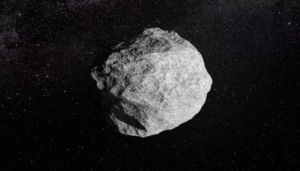In recent discussions, several prominent figures have highlighted the potential threat posed by near-Earth asteroids, emphasizing the need for proactive measures to safeguard our planet.
Asteroid 2024 YR4: A Potential Threat
Discovered on December 27, 2024, by the ATLAS telescope in Chile, asteroid 2024 YR4 has garnered significant attention due to its potential risk to Earth. Measuring between 130 and 300 feet in diameter, this asteroid has an estimated 2.3% chance of impacting Earth on December 22, 2032. Such an impact could cause damage exceeding that of 100 nuclear bombs, leading to catastrophic regional consequences. Potential impact zones span vast areas, including the eastern Pacific Ocean, South America, the Atlantic Ocean, Africa, the Arabian Sea, and South Asia.
Expert Warnings and Calls to Action
Dr. S Somanath, head of the Indian Space Research Organization (ISRO), has underscored the serious risk of asteroid impacts, which could lead to mass extinction events. He emphasized the necessity for technology to predict and deflect such threats, stating, “If such an event happens on Earth, we all are extinct.” Dr. Somanath advocates for global cooperation and proactive measures, highlighting ISRO’s collaboration with international organizations like the International Asteroid Warning Network (IAWN) and the Space Mission Planning Advisory Group (SMPAG). ISRO is also planning to join a planetary defense mission ahead of Apophis’s close approach in 2029, aiming to study the asteroid when it is just 32,000 km from Earth.
Astrophysicist Neil deGrasse Tyson has also highlighted the potential dangers of asteroid impacts. Discussing asteroid Apophis 99942, he noted that while initial concerns about a 2029 impact have been alleviated, the possibility of a future collision remains. Tyson described the catastrophic effects such an impact could have, including massive tsunamis and widespread devastation. He emphasized the importance of monitoring and preparing for such threats to mitigate potential disasters.
Mitigation Strategies and Technological Efforts
In response to these potential threats, space agencies are exploring various mitigation strategies. NASA’s Double Asteroid Redirection Test (DART) mission in 2022 demonstrated the feasibility of altering an asteroid’s trajectory by intentionally colliding a spacecraft with it. This mission marked a significant milestone in planetary defense, showcasing humanity’s ability to potentially prevent catastrophic impacts.
However, experts caution that time constraints pose significant challenges. Dr. Robin George Andrews highlighted that the eight-year window before a potential impact might be insufficient for planning and executing a deflection mission. He pointed out that while methods like kinetic impactors and nuclear devices are considered, their implementation requires extensive preparation and international collaboration.
Global Collaboration and Future Initiatives
The potential threat of asteroid impacts has prompted calls for increased global collaboration. ISRO’s planned participation in missions to study asteroids like Apophis exemplifies the importance of international partnerships in planetary defense. By sharing data, resources, and expertise, space agencies worldwide aim to develop effective strategies to detect, monitor, and, if necessary, deflect hazardous asteroids.
In conclusion, the warnings from experts and the proactive measures being undertaken underscore the importance of preparedness in addressing potential asteroid threats. While the probability of a catastrophic impact remains low, the consequences are severe enough to warrant significant investment in detection and mitigation technologies. Through global collaboration and continued research, humanity can enhance its readiness to protect the planet from these celestial hazards.


